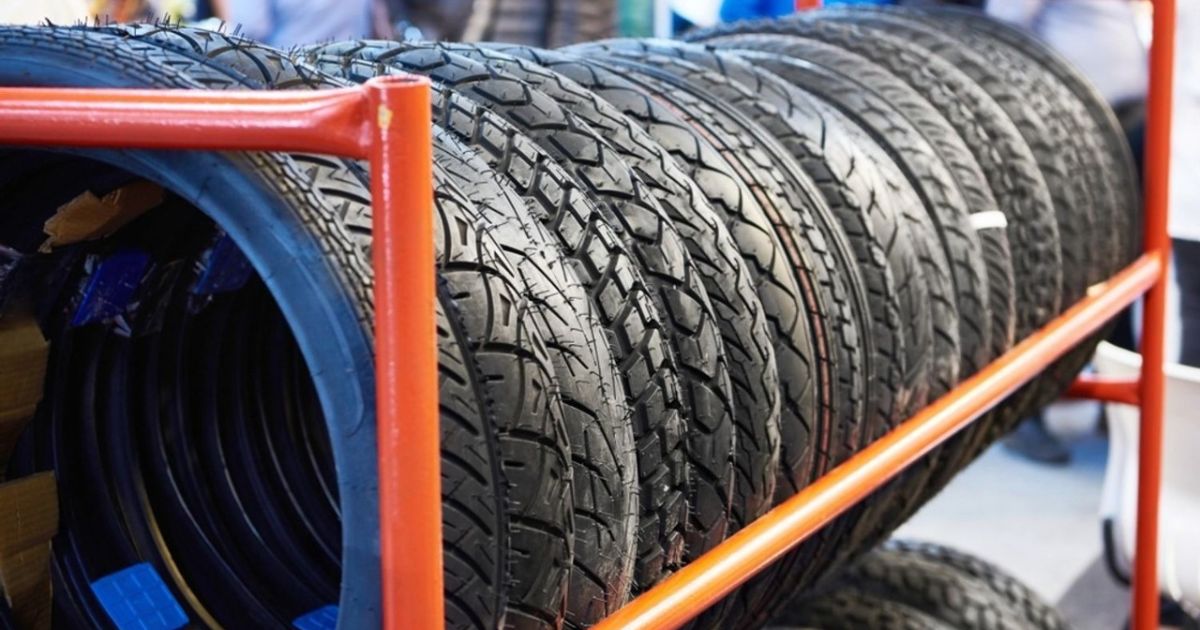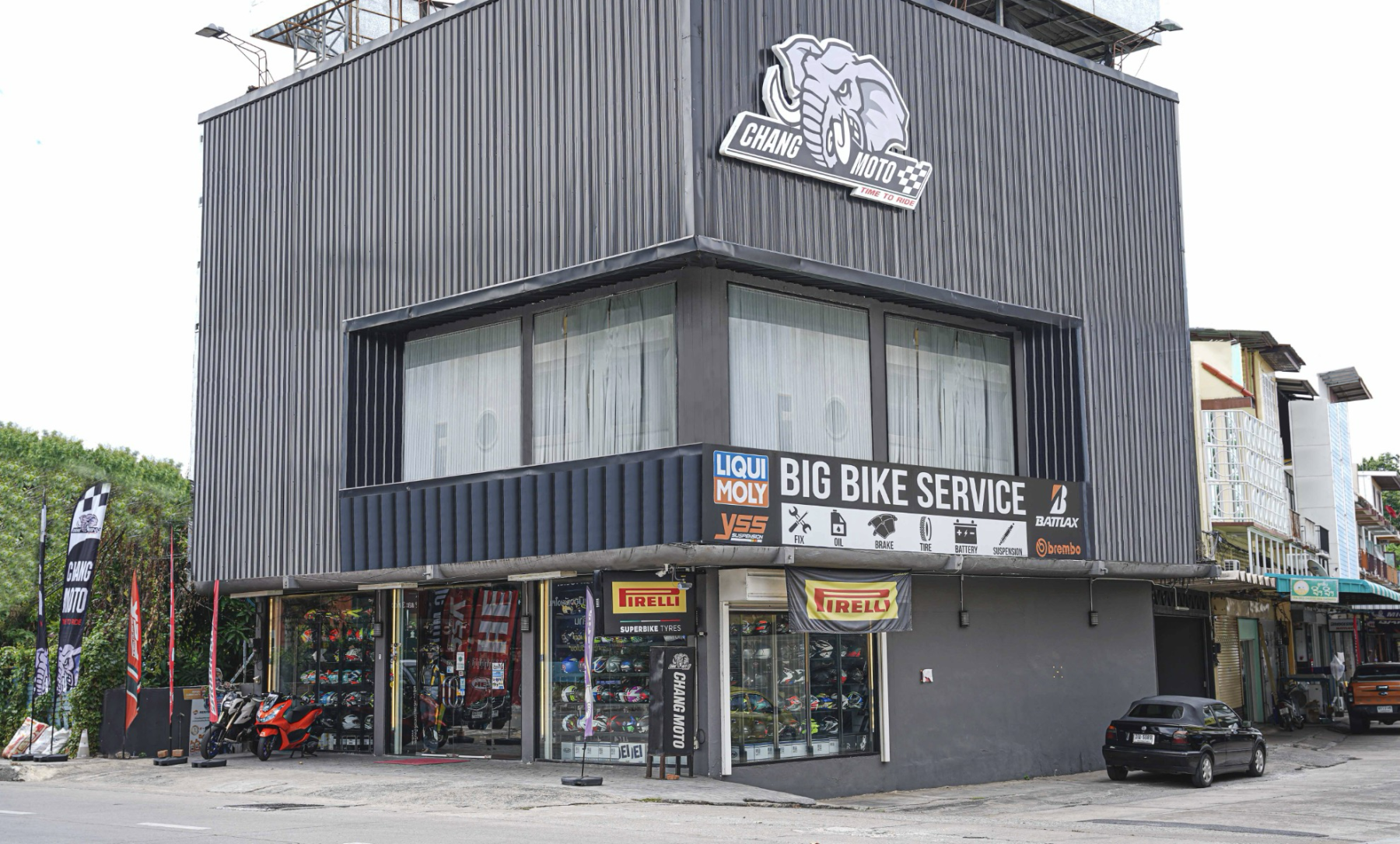
Renting a Motorcycle in Thailand: A Local’s Guide
left for contents
If you want to see the real Thailand, get on two wheels. From the sweeping mountain curves of the north to the coastal roads of the south, a motorcycle opens up a side of this country most tourists will never see.
I’ve lived here since 2019 and my love for this beautiful land and its people was developed on many motorcycle trips through the countryside. I love it so much, I even started running tours here.

Renting a motorcycle lets you explore Thailand on your own schedule. Thailand’s roads range from chaotic city streets to curvy mountain two-lanes to steep oceanside avenues. So whether you’re looking to rent and ride near Chiang Mai, Bangkok or Phuket (for both proper motorcycles and scooters), I’ll give you all the details on the best shops and the whole rental experience and what to look out for.
I’ve been renting and riding full time in Thailand for almost 6 years now, so you’re getting the local’s perspective! First I’ll go through all the top shops to rent from, and then everything you need to know on licensing, costs, road rules, and safety so you can enjoy riding in Thailand.
Recommended Rental Shops (TL;DR)
Chiang Mai
- Best Condition Bikes: C&P Big Bike Rental
- Biggest Fleet: POP Bike Rental
- Scooters: FleetCNX (takes credit cards), Mango Motorbike and Scooter Rental, Bikky Chiangmai and Zippy Motorbike Rentals.
C&P is my clear favorite – the husband and wife team are thorough mechanics with the best maintained fleet of touring and adventure bikes in Northern Thailand. POP has a larger selection of bikes with more sport and naked bikes, but generally less care taken to the bikes themselves.
All of these shops are well reviewed for reliable bikes and clear contracts, and I’ve used every one of them personally. Each provides helmets and C&P also has jackets for rent. Avoid offers that seem too cheap (less than 150 THB/day) and always inspect the bike and document existing damage before leaving.
Bangkok
Bangkok has thousands of scooters for rent; choose shops that issue written contracts and use online booking systems. Rentlab Bangkok is the easiest (since it’s all digital) with transparent pricing and they won’t hold your passport as bond. Avoid street‑corner vendors advertising “no passport needed” — these often lack insurance and may demand to hold your passport as leverage anyway, once you’re in the shop. Make sure the shop provides a damage checklist and clear policies on late return and theft.
Phuket
Phuket’s tourism boom means scooters are everywhere. There is no single stand‑out chain; instead, ask your accommodation for trusted local rentals. Requirements generally include a valid license and an IDP, a passport copy, and a cash or credit‑card deposit. Helmets are mandatory and you may need to pay a small fee to rent one. Because roads can be steep and slippery, choose a bike in good condition and avoid overloading. If you’re renting a scooter, 150cc+ is best to handle the steep roads.
Best Motorcycle Rentals in Chiang Mai
Northern Thailand is a paradise for motorcyclists, and Chiang Mai is its unofficial basecamp. The city has a cluster of reputable rental outfits, but two names stand out for serious riders looking for adventure and road‑worthy machines.
C&P Big Bike Rental
Link: https://www.cpbigbikechiangmai.com/
C&P is a homegrown Chiang Mai shop run by longtime riders Lan and Ammy. I’ve personally worked with Lan and Ammy for 4+ years and their professionalism, knowledge of local routes and willingness to take time explaining each bike’s features stands out to me among all the rental shops I’ve worked with around the world.
Lan studied mechanical engineering before opening the business more than 25 years ago, and the couple’s reputation is built on immaculate fleet maintenance and straightforward contracts. Their bikes range from mid‑size dual‑sports to larger touring machines, and every motorcycle is serviced regularly and inspected before and after rental.

Helmet rental is included for free with the bike, and for a very small fee you can also rent jackets from them. Top boxes and phone holders are included on each bike free of charge, but you can also pay a little extra for side cases if your choice of bike supports them. And they have plenty of bungies to borrow for strapping down extra bags!
C&P requires either a cash deposit (amount varies with engine size) or a passport as security when you rent the bike. C&P hires bikes for use in Northern Thailand only; cross‑border touring isn’t permitted. Only compulsory motor insurance is included, covering medical expenses but not damage to the bike, so riders need personal travel insurance or be prepared to pay for repairs.
If you have any problems out on the road, C&P will make it right. Just an example – one of my touring customers once had a bike that got the shakes around 55-60kph. Len and Ammy rode over an hour to come meet us with a new bike, and rode the shaking bike back to Chiang Mai. That’s great service!
If you’re planning the Mae Hong Son loop or exploring the mountains around Chiang Rai, C&P’s dependable machines and customer‑first attitude make it one of the safest bets in town.
POP Big Bike Rental
Link: https://www.popbigbike.com/
POP Big Bike operates on the east side of “the moat” and has a fleet of everything under the sun from sport bikes to nakeds, cruisers, ADV and touring bikes. Their fleet is far broader than C&P’s, however , with everything from maxi‑scooters to adventure and touring bikes, and they include accessories like helmets, top boxes, side boxes, phone holders and gloves. Foreign renters must provide a passport, fill out a rental form and pay the daily rental price plus third‑party insurance.
As with C&P, the compulsory insurance covers only medical expenses; there’s no collision coverage for the bike.
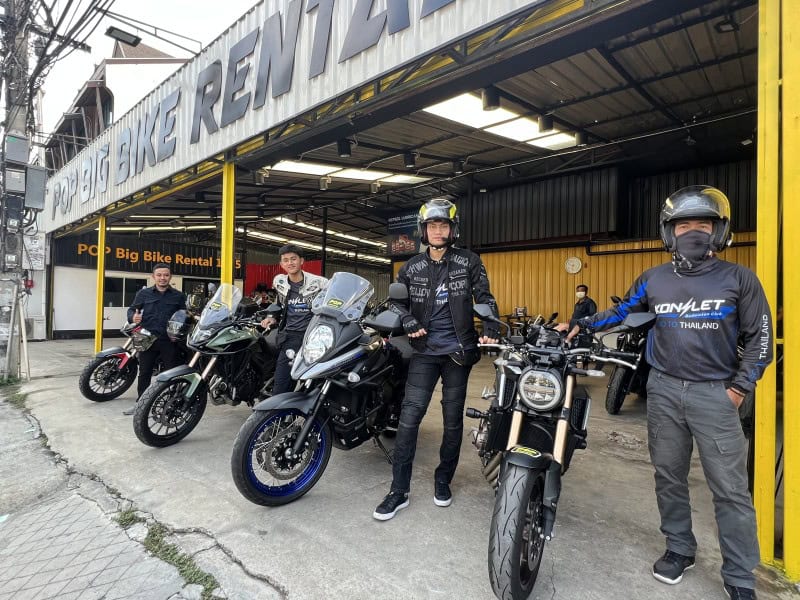
POP’s deposit is tied to engine size, and a copy of your passport is kept on file. They encourage you to photograph the bike before leaving and keep the rental documents for return. The big advantage here is choice: riders who want a premium touring machine or a modern maxi‑scooter for two‑up travel will find the widest selection. However I’ve found the state of the bikes not as impeccable as C&P, and the service not as smooth.
POP also rents bikes for cross‑country trips and can provide paperwork for riding into Laos, though deposits increase for international travel. Their large inventory means you can find a great bike for you even if you walk in during high season (November – January).
Other Chiang Mai Options
Cat Motors (Chiang Mai Old City area)
Link: http://catmotors.net
- Family-run, traveller-friendly scooter and motorbike rental shop.
- Fleet spans from 125 cc automatics (for city use) to 300 cc machines suitable for the Mae Hong Son Loop and other longer trips.
- In my experience they’re more responsive than most to troubles and issues.
- Location is centrally within the Old City (approx. 500 m from Wat Phra Singh) – very accessible.
- Typical pricing: e.g., 250-300 THB/day for a 125 cc scooter; higher for larger bikes.
- Why pick them: If you want a reliable, no-frills rental with good reviews, especially for scooter or small-bike hire in and around Chiang Mai.
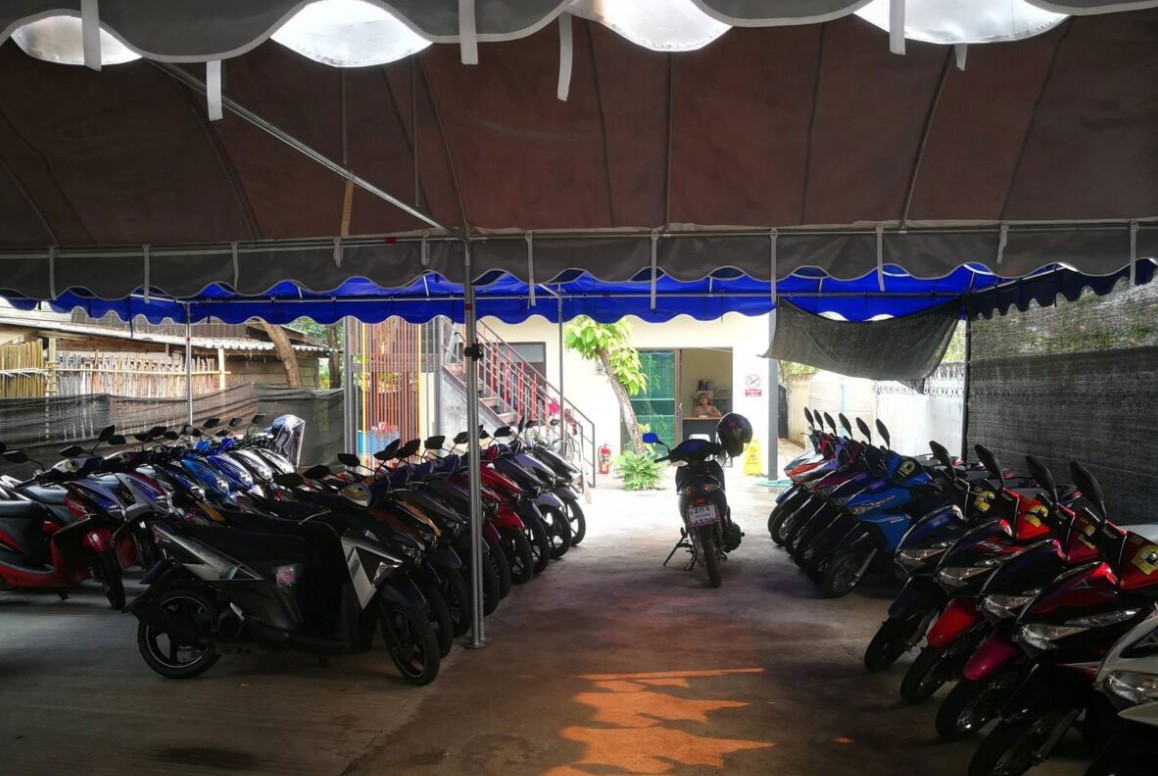
Mr Mechanic (Old City / Moon Muang Rd)
Link: https://www.chiangmai-motorcycle-rental.info/
- A long-running rental business (since around 1994) with multiple storefronts around the Old City.
- They offer a wide spread of scooters and mid-bikes; English & Chinese spoken staff.
- The pricing is fair, but you should check the bikes thoroughly and make sure you document any pre-existing damage.
- Tip: Ideal for city and close-by excursions; if you go far north or want a high-end adventure bike, inspect the condition well and confirm terms.
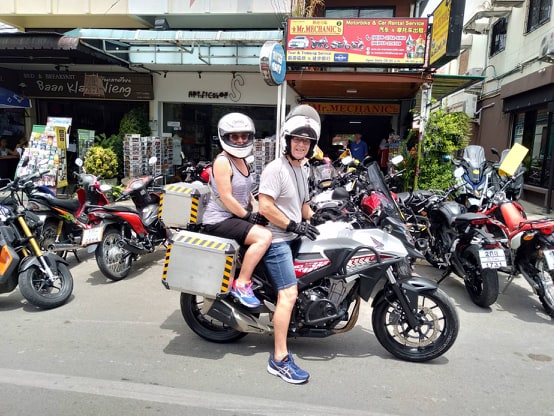
AYA Service (Chiang Mai → Pai one-way rentals)
Link: https://www.ayaservice.com/
- Best for: If you want to do the scenic ride Chiang Mai → Pai (or vice versa) and avoid the hassle of back-tracking.
- Particularly strong offering if you want to ride from Chiang Mai to Pai (and possibly not return the same way). They provide one-way rental service and luggage transfer/back-haul.
- Rates example: around 200 THB/day for small scooters; additional fee if leaving the bike in Pai rather than returning to Chiang Mai.

Best Motorcycle Rentals in Bangkok
Bangkok’s gridlock might make you think twice about two wheels, but a scooter or mid‑sized motorcycle is often the fastest way to get around. And the drivers are not as aggressive as the traffic might make you suspect!
The key is choosing a reputable shop that treats its bikes and customers well. Here are a few of the best options.
Big Bike Rental Bangkok
Link: https://bigbikerentalbangkok.com/
Run by enthusiasts Steve and Bernd, Big Bike Rental Bangkok boasts one of the newest fleets in the city and specializes in larger touring bikes. Their fleet of motorcycles are clean and well‑maintained, staff is response to issues and willing to assist with mechanical issues during multi‑day trips.
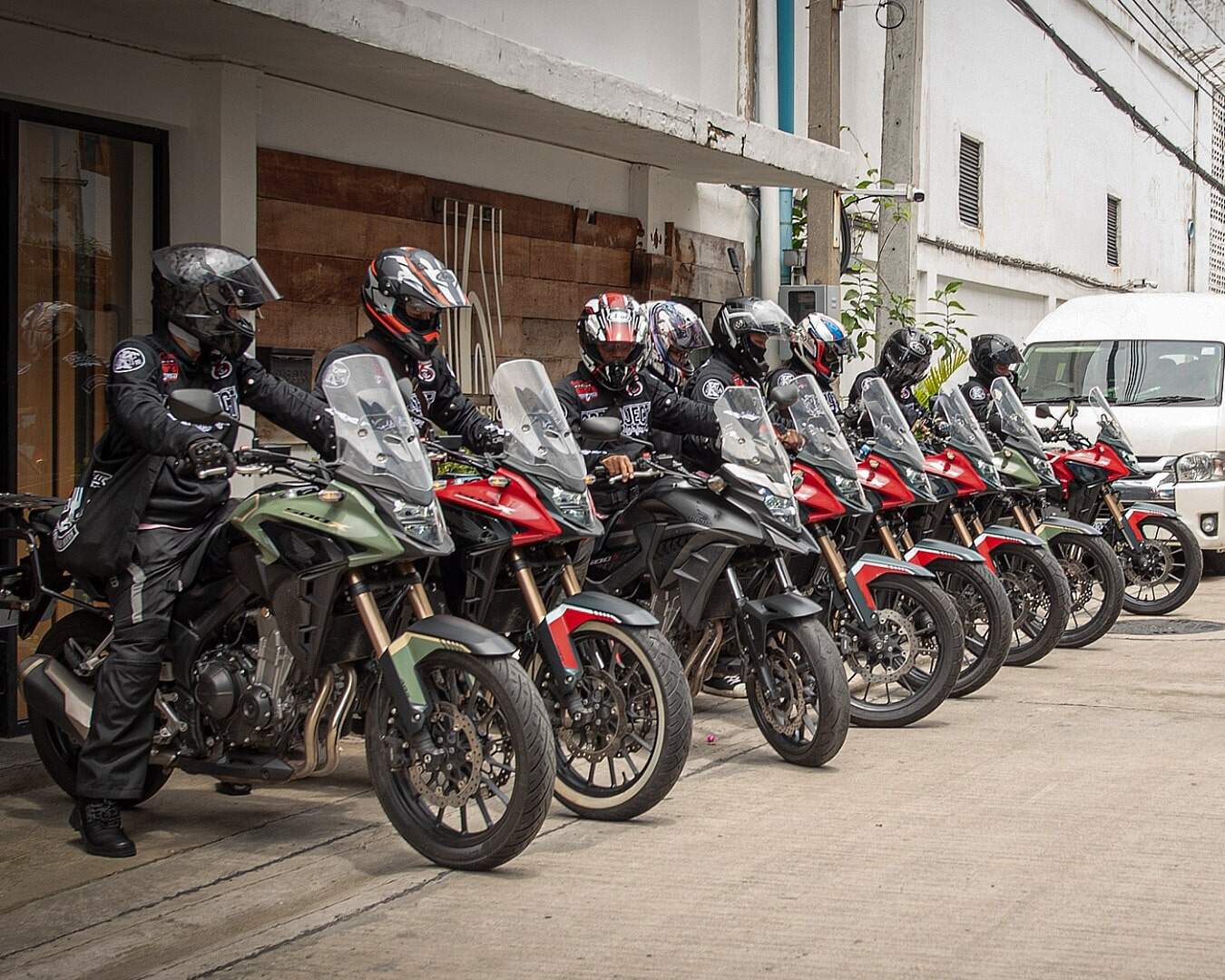
If you’re planning cross‑border rides into Cambodia or Laos often choose this shop because the owners will help arrange paperwork and provide phone support; however, budget for the additional deposit and paperwork fees.
If you want a virtually new adventure or touring bike, Big Bike Rental Bangkok offers peace of mind and expert assistance. The trade‑off is a hefty deposit: riders leave a cash deposit that can reach 40,000 THB (about US$1 150) for the most expensive models.
BSR Bike Shop
Link: https://www.bsrbikeshop.com/
BSR Bike Shop operates from Phra Khanong and rents both city scooters and full‑size touring machines. Renters must be at least 21, present a passport or driver’s license (photocopied, not retained) and pay a cash deposit before receiving the bike. Standard medical insurance is included, but damage and theft coverage can be purchased for an extra fee. Helmets are provided free and replaced annually, which is a nice touch.
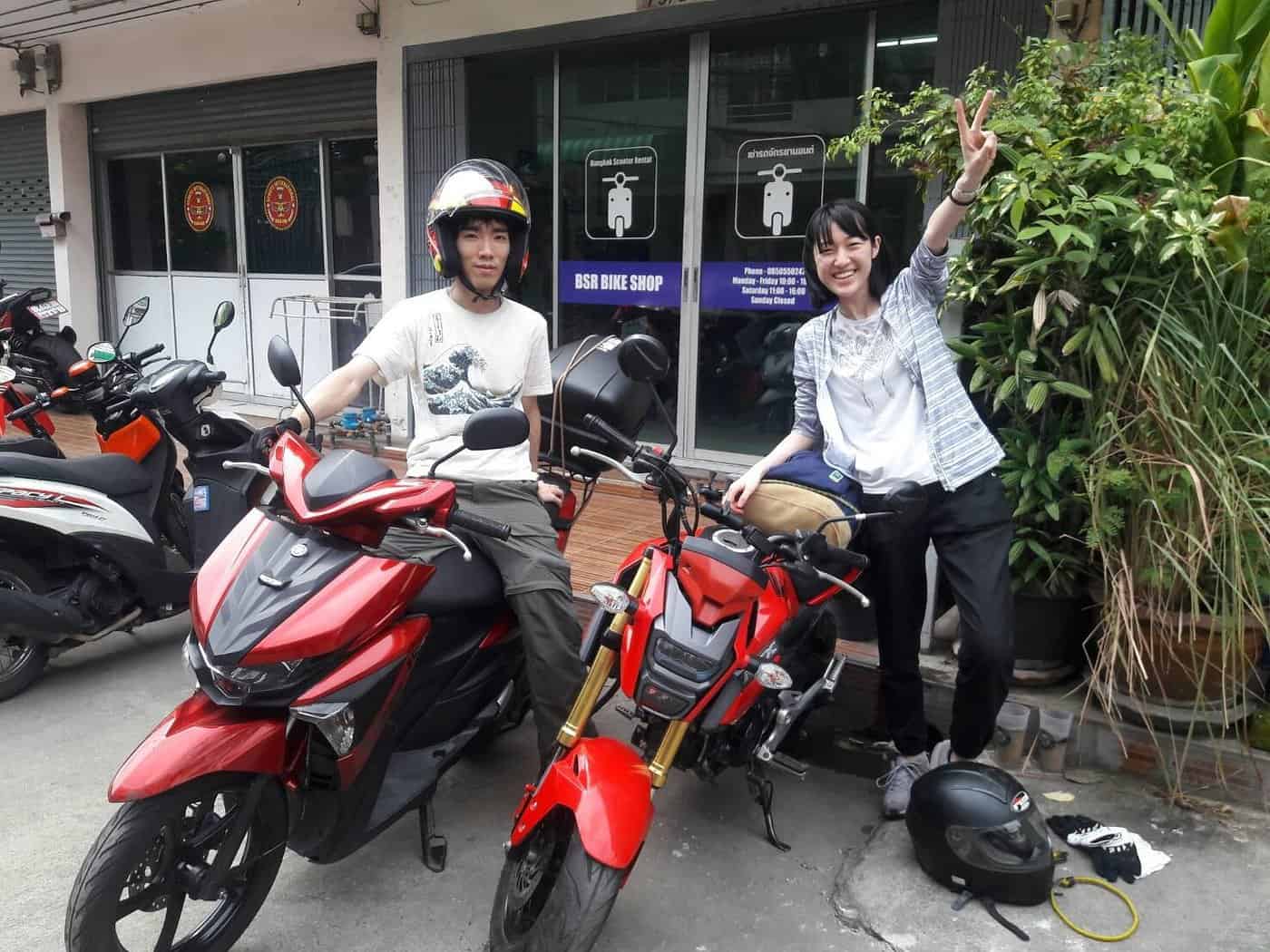
For touring bikes the deposit structure changes: rentals within Thailand require a 5,000 THB deposit, while cross‑border trips (to Laos, Cambodia or Malaysia) require 30,000 THB. BSR’s website clarifies that deposits are returned after inspection, and payment can be made via cash, bank transfer or credit card. This transparency, coupled with optional damage coverage and English‑speaking staff, makes BSR a solid option if you want a mid‑range touring bike with a lower deposit.
RentLab
Link: https://rentlabth.com/
RentLab takes a different approach: it’s a fully digital scooter rental service that eliminates paperwork and physical deposits. Customers choose a scooter online, pay with a credit card or PayPal, verify their identity by uploading a passport photo and selfie, and then collect the bike via self‑pickup lockers. The company’s website proudly states that there is no passport or cash deposit required.
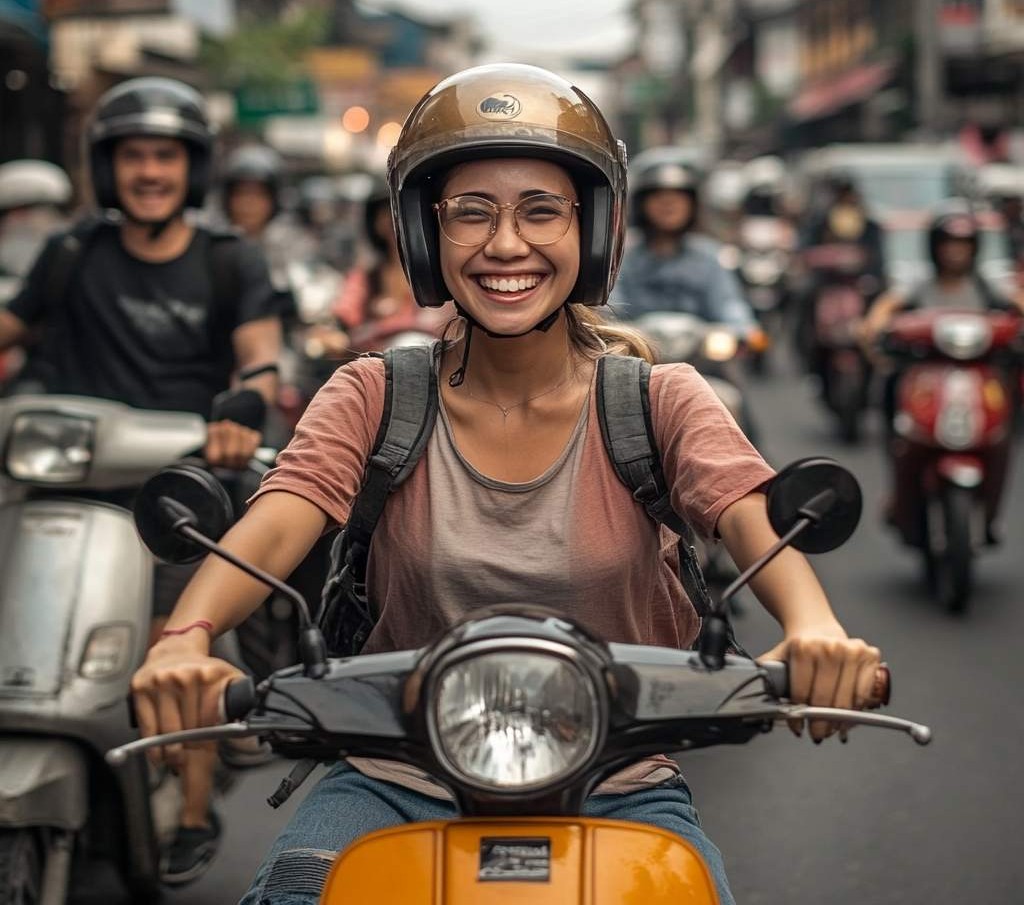
Prices are among the lowest in Bangkok and include helmets, health insurance, a rain jacket and even snacks. Because RentLab focuses on 110–300 cc scooters rather than big bikes, it’s ideal for travelers staying within the city. Riders looking for a simple, fuss‑free way to get around Sukhumvit, Silom or Ekkamai appreciate the convenience and minimal risk, though those planning highway trips to the mountains should look elsewhere.
Rent A Scooter Bangkok (Honorable Mention)
Link: https://rentascooterbangkok.com/
For urban explorers who want the middle ground between a deposit‑free service and high‑end adventure bikes, Rent A Scooter Bangkok offers modern automatic scooters with clear pricing and easy online booking. They recommend an International Driving Permit and note that a small cash deposit (typically 3,000–5,000 THB) plus a passport copy is required.
Licensing and Documents
- Age & license – You must be at least 18 years old and hold a valid motorcycle license from your home country. Thai law requires an International Driving Permit (IDP) with a motorcycle endorsement or a Thai motorbike license. An IDP acts as a translation of your license and is only valid when carried with your original license. Renting or riding without the correct motorcycle endorsement can result in fines (typically 500–1 000 THB) and renders insurance invalid. That said, I’ve never had a rental shop check an IDP in order to rent.
- Do not rely on car licenses – Most rental scooters are 125 cc or larger and legally require a motorcycle license. Some agencies may rent to tourists with a car license, but if you are stopped or have an accident you could face fines and be liable for all damages.
- Carry your documents – Always carry your passport or a copy, your IDP and the rental contract while riding. Police checkpoints frequently stop foreigners to check documents in tourist areas. Keep the rental agreement and receipts as they may be needed if you are pulled over or to reclaim your deposit.
- Insurance – Basic medical coverage is usually on you – I’ve never heard of this coming with a motorcycle rental. Travel insurance that specifically covers motorcycle use above 50cc is great to have, though keep in mind it usually requires a valid license. Without the proper license, insurance claims are typically rejected.
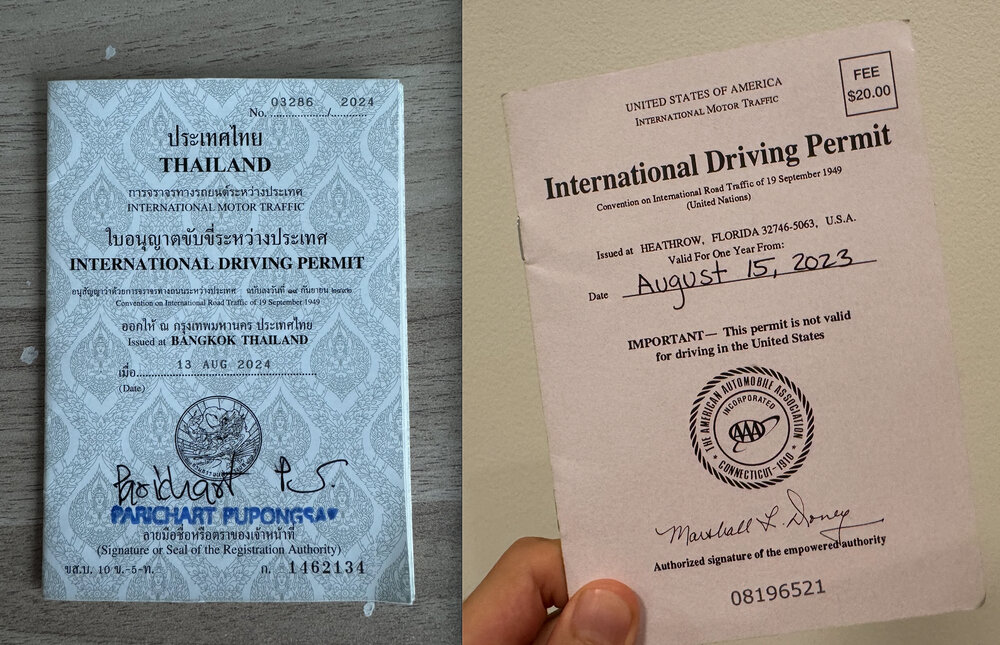
Avoid leaving your passport
Many rental shops request a deposit; reputable businesses will accept a cash deposit (1,000–5,000 THB) or a copy of your passport. Some others will firmly require that you leave your original passport with them as bond for the rental bike. I’ve never had an issue with this in Chiang Mai, but I can’t recommend being without your passport in a foreign country at any point! Try to provide cash instead and insist on a written receipt stating the deposit amount and terms.
Types of Motorcycles Available
| Category | Engine size & features | Typical models / notes |
|---|---|---|
| Automatic scooter | 110–125 cc; step‑through frame; twist‑and‑go; ideal for city use and beginners | Honda Click 125i, Yamaha Mio 125, Honda Scoopy 110 |
| Premium scooter | 150–155 cc; larger, more comfortable; better for two riders or hills | Honda PCX 150, Yamaha NMAX 155 |
| Manual / semi‑automatic | 150–250 cc; manual or semi‑auto gearbox; more powerful for mountain roads. | Common options include Honda CB150 R or similar; only rent if licensed and experienced |
| Big bikes | 300cc+ adventure, touring and sport bikes; higher daily rates and deposits. | Available in larger cities (Bangkok/Chiang Mai); ensure you have the correct license and insurance |
Automatic scooters dominate Thai rentals because they are easy to ride and cheap to rent. Choose a bike you can comfortably handle—bigger engines can be tempting but require proper licensing and experience.
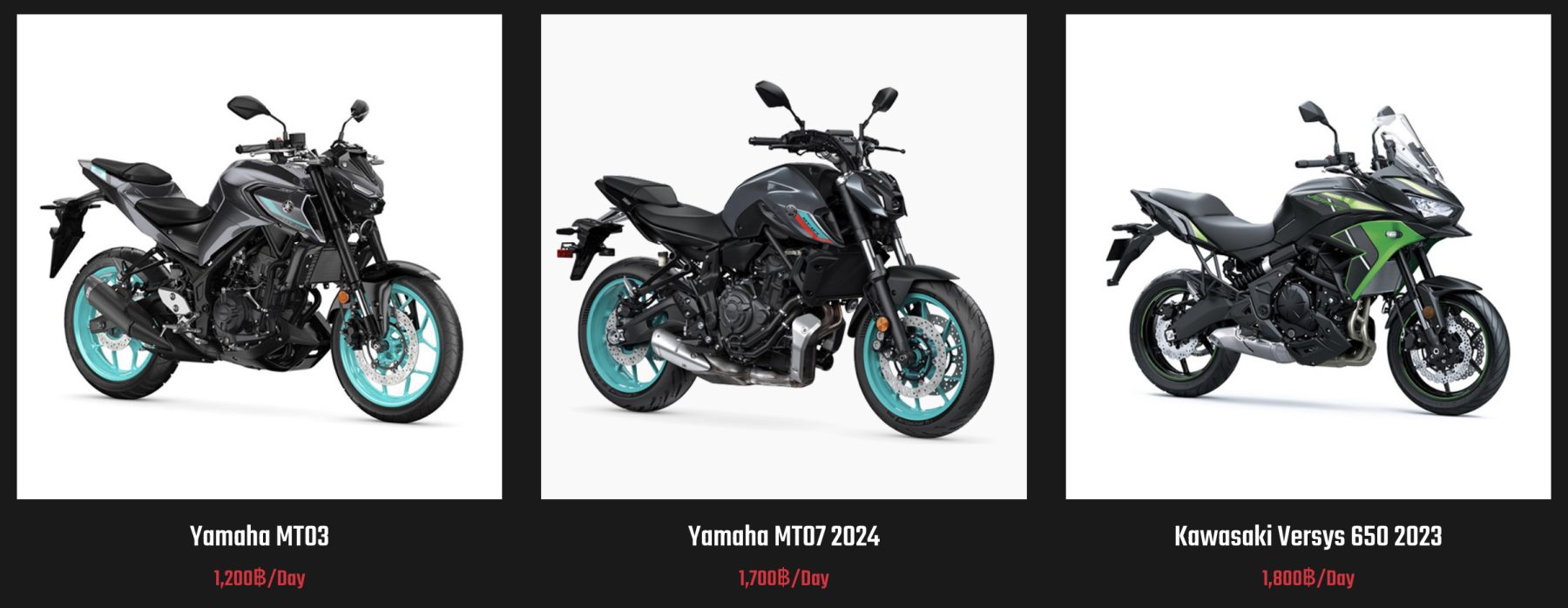
Typical Rental Costs and Deposits
| Bike type | Daily rate (THB) | Weekly rate (THB) | Monthly rate (THB) | Typical deposit (THB) |
|---|---|---|---|---|
| 110–125 cc scooter | 150–300 THB/day popular tourist areas may quote ~250 THB/day | 1,000–1,500 THB/week (often “6 days for the price of 5”) | 3,000–5,000 THB /month | 1,000–3,000 THB |
| 150 cc+ scooter or manual bike | 700–2,500+ THB/day for big bikes or premium scooters | Negotiate multi‑day discounts; expect higher deposits | 12,000 THB+ /month depending on model and rental | 2,000–5,000 THB |
Note: Fuel is not included. You will receive enough fuel to reach a petrol station and must return the bike with a similar level. Petrol costs around 35 THB per liter at stations; roadside vendors sell bottles for 40–60 THB. Helmet hire is usually free but premium helmets or full‑face models may incur a small fee.
Rental Process
- Choose a rental company – Research shops via reviews or ask hotels/hostels for recommendations. Avoid vendors that don’t issue contracts or insist on your passport.
- Select your bike – Pick a model suitable for your experience and the terrain. For city riding in Chiang Mai, a 110-125cc is sufficient. However for hills in Chiang Mai and Phuket, 150cc+ is better.
- Gather documents – Bring your passport (or a copy), national motorcycle license, IDP and cash deposit. Some shops will accept a photocopy of your passport plus a deposit.
- Choose insurance – Ask whether the rental includes medical or liability coverage. If not, rely on your travel insurance and ensure it covers motorbike riding.
- Review the contract – Read the rental agreement carefully. Confirm rental duration, damage policies, included equipment (helmet) and deposit return conditions.
- Inspect and document – Walk around the bike with the staff, photographing scratches, dents, tires and lights or film a full walk‑around video. Test brakes, lights, horn and suspension. Ensure you receive a helmet that fits and is in good condition
- Pay and deposit – Pay the rental fee and deposit. Obtain a receipt for the deposit showing the amount and circumstances for refund.
- Ride responsibly – Carry your documents, follow road rules and drive defensively. Use the steering lock and provided chain to secure the bike when parked. Save the rental shop’s phone number for emergencies.
- Return the bike – Return the scooter on time. Wash the bike and match the fuel level if required. Perform another walk‑around to confirm no new damage and collect your deposit.
Road Rules and Etiquette
- Drive on the left – Thailand uses left‑hand traffic; always stay left, especially when turning or pulling out.
- Helmet law – Helmets are mandatory for rider and passenger. Police regularly issue fines (around 500 THB) for not wearing a helmet. An unfastened helmet can be considered “not wearing.”
- Speed limits – In cities the limit is typically 40–60 km/h, while highways are 80–100 km/h. There are few speed signs; ride at a safe speed for conditions.
- Licensing checkpoints – Police checkpoints in Chiang Mai and Bangkok check for helmets and proper licenses. Fines for lacking an IDP or motorcycle endorsement are usually 500 THB.
- Lane discipline – Use the left lane or shoulder. Motorbikes often filter to the front at traffic lights but do so cautiously. Signal your turns even if others don’t.
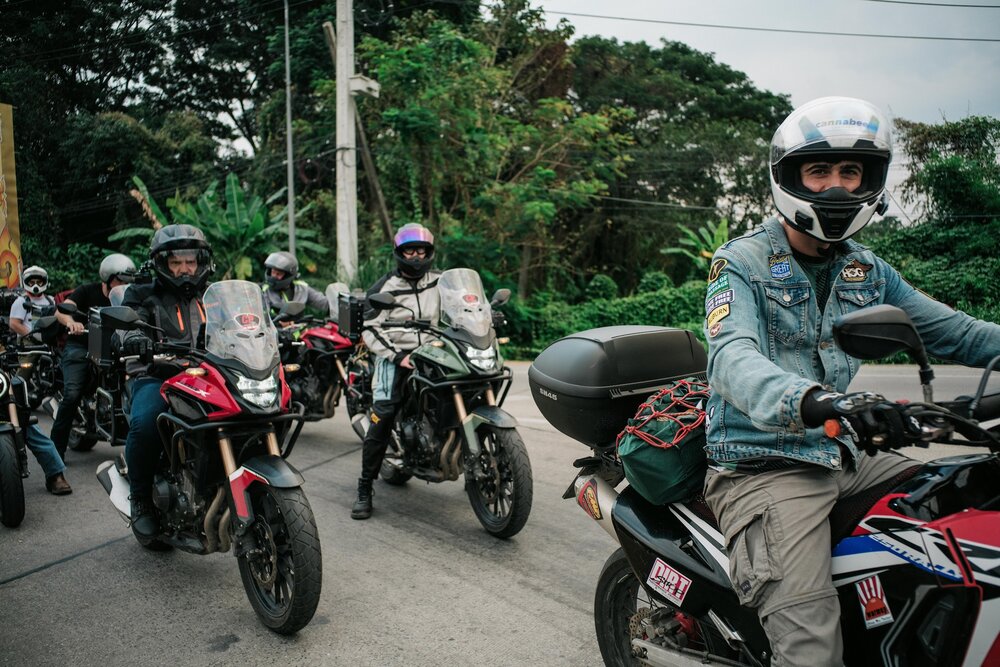
- Overtaking and turns – Overtake slower vehicles on the right (the equivalent of passing on the left in right‑hand countries). At red lights you may be allowed to turn left after stopping unless signs prohibit it.
- Parking – Just try not to be in someone’s way. Avoid red‑white curbs or blocking driveways – you might get moved around a bit.
- Don’t drink and ride – Drunk driving can result in arrest and heavy fines (up to 20 000 THB), and is extremely dangerous.
- Night riding – Avoid riding after dark; streets may be poorly lit and other drivers may be intoxicated.
- Road conditions – Expect potholes, gravel, sand, stray animals and slippery patches, especially during the rainy season. Slow down on wet roads; tropical downpours can quickly flood streets.
- Emergency numbers – Tourist Police: 1155; Ambulance: 1669.
Safety and Preparation
- Wear proper gear – A full‑face helmet and protective clothing (long pants, jacket, gloves, closed‑toe shoes) greatly reduce injuries. Many tourists ride in flip‑flops and shorts—don’t emulate them.
- Ride defensively – Assume other drivers may not see you. Keep a safe following distance and anticipate sudden stops or lane changes.
- Avoid wet-season pitfalls – Roads become slippery during Thailand’s rainy season; ride slowly and brake gently.
- Check fuel frequently – Fill up before leaving town; remote roads may lack petrol stations. Avoid roadside fuel sold in bottles when possible as it may be low quality.
- Stay hydrated and sun‑protected – Thailand’s climate is hot and humid. Bring water, wear long sleeves and avoid riding in the midday sun.
- Plan your route – Use offline maps or download directions ahead of time. In mountainous areas like the Mae Hong Son Loop near Chiang Mai, roads are twisty with steep gradients; take breaks often and descend slowly.
City‑Specific Tips
Chiang Mai
- Mountain roads and viewpoints – Popular rides include Doi Suthep and the Samoeng/Mae Sa Loop. Expect tight curves and steep gradients; novice riders should exercise caution.
- Police checkpoints – Common around the Old City and tourist routes; always carry your IDP, license, passport copy and rental paperwork.
Bangkok
- Traffic – Bangkok traffic is congested and fast; riding requires alertness. Avoid rush hours if possible.
- Avoid expressways – Many expressways and toll roads ban motorbikes. Stick to regular roads and observe lane markings.
- Side streets – Bangkok’s back alleys (soi) offer shortcuts but can be narrow and full of obstacles; slow down and watch for pedestrians and vendors. Pedestrians are allowed to enter crosswalks at any time and it’s on you to stop!
Phuket
- Steep coastal roads – Coastal routes have hills and sharp curves. Opt for a slightly more powerful scooter if riding with a passenger.
- Rainy season caution – Phuket experiences heavy showers; roads become slippery and visibility drops. If it rains heavily, pull over until conditions improve.
- Helmet fees – Some shops may charge a small fee for helmet rental; check this in advance.
Final Thoughts
Renting a motorcycle in Thailand can turn your trip into an adventure, giving you the freedom to explore temples, markets and hidden beaches on your own schedule. Respect the law, obtain the correct license, wear proper gear and choose a reputable rental company. With these precautions, you’ll have a safe and unforgettable ride across Chiang Mai’s mountains, Bangkok’s bustling streets and Phuket’s tropical coastlines.
Related

Best Electric Motorcycles of 2025 – A Rider‑Focused Guide
Discover the best electric motorcycles of 2025—street, dirt, and dual-sport rides with real power, long range, and instant torque thrills.

